The larger the compressor, the more it can supply. This is just a simple fact of physics and needs to be considered when you’re outfitting your garage or workshop for airpower. There are many things that need compressed air: paint sprayers, sandblasters and even pneumatic tools like impact wrenches and nailers all rely on compressed air. For most people, the biggest demand for compressed air is at their tool, so that should be supplied first, but there are often other needs.
Compressors for tools need to be able to provide enough CFM (cubic feet per minute) of compressed air in order to run efficiently and not burn out your gun or impact wrench after only a few minutes of use. These types of tools can require anywhere from 5-60 CFM depending on its duty cycle (how long it runs before needing a cool-down period). If you’re using an impact wrench, all day long you’ll want something like the Hitachi WH18DBDL 18V Lithium-Ion 1/2 inch high torque impact wrench with 100-foot lbs max torque and very high CFM – about 40.
If you’re using a spray gun or paint, that’s when the larger compressors come in. Even with smaller air compressors, say 5 HP or so, you can use smaller duty cycles on tools like this than run your air compressor all day long at 100% duty cycle.
The most common type of large-capacity air compressor is the rotary screw. This is where the piston, cylinder, and head assembly are attached to a rotating spindle which is driven by either an electric motor or gas engine. There are also two-stage compressors that, instead of one spindle, have two with pistons on opposite ends (think of an engine block, with two pistons at 180 degrees).
Another common type of compressor is the stationary reciprocating assembly. The piston moves in a cylinder that compresses gas or air. This allows for relatively easy piping and component replacement, but because all the components are fixated together to move as one unit, it can be difficult to find one that fits your needs. This type of compressor is typically used for industrial purposes, but there are smaller businesses that use this type as well.
The last type of high CFM air compressor is the rotary vane. Here, the pistons slide inside a rotating cylinder and compress air or gas against the vanes on the inner wall of the cylinder. These types of compressors are less common than their reciprocating counterparts, but they offer better oil control capabilities because they can be lubricated by an external oiling system.
Best 10 Highest CFM Air Compressors
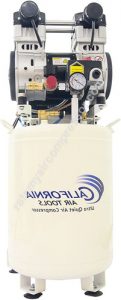
With the CALIFORNIA AIR TOOLS 10020DC-22060 Ultra Quiet & Oil-Free Air Compressor, you can find peace and quiet brimming throughout. Whether you’re in your workshop or on your enclosed porch, this powerful 2.0 HP compressor will allow for hours of uninterrupted time without sacrificing performance. Along with its easily palpable power capabilities – boasting up to 120 psi – extreme versatility is an understatement. It’s equipped with a rubberized ergonomic handle for ease of use and comfortability while simultaneously packing 30% more pumping life than comparable models which makes it about five times as durable!
The new oil-free pump provides convenience by supplying oil less often than traditional models! The dual-piston design allows it to effortlessly push out high CFM’s without any hiccups or malfunctions. It’s made to provide powerful inflation capacities, perfect for the tires on your cars, trucks, motorcycles, and even bikes! No matter if you’re doing some heavy-duty work around your place of employment or creating a fun project in your basement with friends and family, this is one compressor that can keep up with anything you throw at it.

This Makita MAC5200 3.0 HP Big Bore Air Compressor is the first choice for heavy-duty jobs because nothing will be compromised on your workmanship – not even when you’re restoring furniture or working under the hood of a car. Featuring an engine power of 3.0HP, this big-bore air compressor can go up to 90 PSI for outstanding output and performance! The durable cast-iron cylinder dissipates heat more efficiently than other types which reduces wear and lengthens its lifespan; plus, it’s removable yet features oil lubrication to maintain peace of mind throughout use (even during some hard knocks). And with protective bumpers that won’t break or bend like plastic, there’s no need to worry about long-term, day-to-day use.
Also, unlike its counterparts, this is a self-lubricating pump that lessens the hassle of oiling and also lengthens your compressed air tool’s lifespan. Along with exceptional durability and convenience – it is made from a single aluminum alloy with a powder-coated finish to prevent rusting – you’ll notice easy storage because of its lightweight design! It doesn’t get any easier than this for all comfortability and peace of mind at such an astonishing price!
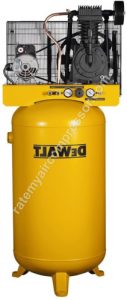
DeWalt DXCMV5048055 Two-Stage Air Compressor is built with a 5-HP TOPS motor to provide long life and quiet operation, Air Compressor Voltage: 230. The integrated control panel has a tank and pressure gauge and 2 quick-connects for convenient control, Air Delivery SCFM @ 175PSI (CFM): 17.9 This compressor delivers plenty of air to run multiple tools at the same time to get the job done faster. Air Delivery SCFM @ 100PSI (CFM): 17.8 This air compressor comes from the factory wrapped in heavy plastic sheets secured tightly enough that just about anything you’re carrying around could do some real damage before inflicting any harm on it, so whether you’re in the shop or in the field, your compressor is always ready to put itself to the task. It’s one of the best air compressors for bigger homes and professional workshops.
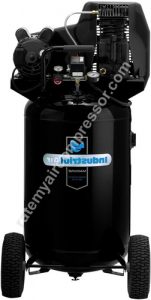
From its stainless steel construction to its fixed-cylinder piston pump, the Industrial Air ILA1883054 is a machine that was made for durability. The heavy-duty induction motor and strong twin cylinders are powered by double odalisque valves with needle bearings for long-lasting performance, all with 155 PSI max pressure which ensures optimum tool performance. The 30-gallon vertical tank comes equipped with pre-attached pneumatic tires so you can move it wherever you need. For added comfort and portability, this industrial air compressor also features dual voltage input wiring so it will work just as well on 120V outlets as 240V outlets. Get your Industry Air ILA1883054 today!
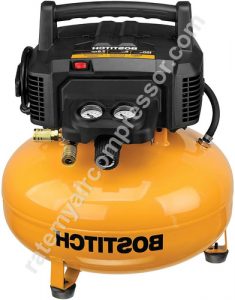
The BOSTITCH pancake air compressor is compact, lightweight, and powerful. The electric air compressor can produce 150 max PSI for when you need it right away. It comes in different colors to match your style. Forget about cold weather with this easy-start-up pump! Don’t take all day doing one project with this energy-efficient machine that only operates at 78.5 dBA – it’s quieter than a vacuum cleaner or dishwasher! You can trust the BOSTITCH pancake air compressor to have everything you’re looking for in an affordable product being sold by the manufacturers themselves.
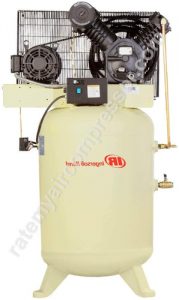
You can trust your compressed air to be safe and consistent with this Ingersoll Rand IRT45465770 Compressor. This compressor is American-made, efficient, powerful yet lightweight, and low-maintenance. With an impressive 120 gallon capacity that’s big enough for the toughest job sites but still convenient to use in small spaces, you’ll never be stuck waiting for it to do its thing again. It connects easily to other components thanks to features like CBA compatible fittings solenoid valves, many sizes of gauge connection couplings high flow outlets, fixed pressure control valves flexible piping kit included handles over 90 psi without modification requiring demand metering only replacing oil when capacity reaches 1 quart ’and more!
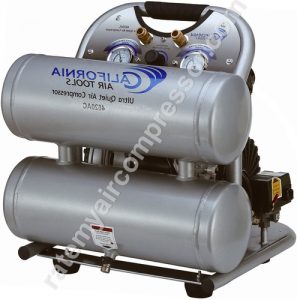
Powerful 2. 0 HP (Rated/Running) motor, this ultra-quiet vacuum leaves your ears with a newfound sense of calm and tranquility with only 70 decibels at peak power. With a 4.6-gallon tank capacity, it’ll be ready for the entire day without the need to stop and refill creating less hassle for you! Speaking of ease, our low maintenance oil-free pump makes for greater longevity between servicing costs so long as proper care is taken in storing away after use! And last but not least, our decimator helps eliminate fatigue by lowering sound levels due to running equipment close to you whether indoors or outdoors without making any sacrifices on quality whatsoever!
California Air Tools CAT-4620AC: Quieter vacuum leaves your ears with a newfound sense of calm and tranquility with only 70 decibels at peak power Perfect for homes, workshops or commercial use, the CAT-4620AC is a powerful and energy-efficient choice for your vacuum needs.
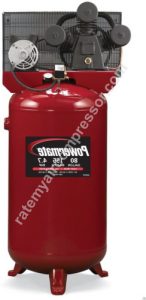
The Powermate Vx line has 2 different sizes. They are perfect for heavy-duty work in construction, remodeling, yard work, or any other tough jobs that would usually leave you exhausted at the end of the day. With a powerful 240 Volt motor, this bad boy will get all your projects done fast. 440 ft-lbs of torque and 15 amps to keep things running smoothly, so no one is waiting around for you to finish up your tasks. You have power where it’s needed with 14 CFM at 90 PSI which provides longer run time on ratchets, impacts spray guns, and hammers! 4 1/2 strokes per minute maxes out just what you need with 80 gallons capacity that doesn’t require constant refilling after every 30 minutes or so. Save on air with a compressor that’s not only powerful and efficient but affordable too!
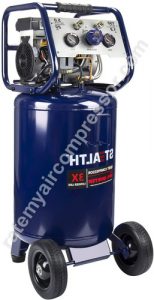
You’ll never want to be without it. The Stealth 20 Gallon Ultra Quiet Air Compressor has arrived with an ultra-quiet system that produces only 68 decibels of noise and is perfect for home use, or on the job site. Stunning design combined with heavy-duty components means this compressor will stay silent during your entire project – even under constant pressure! This amazing product also features a high-quality induction motor capable of generating 1.8 horsepower power for superior performance in construction projects, getting you back to work without delay.
All-day long, you never have to worry about running out of air time again because our Stealth is designed by professionals who know the importance of convenience and efficiency when working on a tight deadline. We know what’s going to help your projects run smoothly and we designed this thang for you.
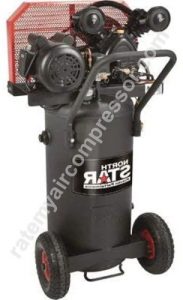
The search for the perfect drill goes on, but with so many contenders out there, it’s hard to find the one for you. Some are powerful enough to bore holes in stone while others are compact and lightweight. But if you’re looking for a heavy-duty option that is both small and versatile then look no further than the NorthStar Single-Stage Electric Air Compressor! This supercharged machine has two high-performance motors that have 2 HP of power each working synergetically at 5 CFM @ 90 PSI all while being lightweight weighing just 19 pounds. That means this clever contraption can make car repairs or finish plumbing projects without breaking a sweat! It even comes wired with 50 feet of power cord too!
High CFM Air Compressors: A Buyer’s Guide
CFM – The abbreviation for “cubic feet per minute”, is a standard unit of measurement that refers to how much air the compressor can pump. A higher number means it can fill larger spaces and do so faster. It’s important to note that different tools can use more or less air and that without enough CFM the compressor will shut off. Since this is a standard unit of measurement you should be able to find information for any tool on its air consumption, and know if it needs a 1-HP or 2-HP model.
Most compressors range between 50 and 150 cubic feet per minute (CFM), but there are outliers with as low as 20 CFM and as high as 500 CFM – these models are typically industrial grade and aren’t necessary for everyday household projects. Larger machines often have cast iron housings which allow them to handle higher PSI levels as well as heavy-duty motors that produce high cycling rates.
The right CFM rating will depend on the tools being used. Higher-powered compressors should be reserved for high-demand applications such as using a framing gun, impact wrench, or pneumatic ratchet. In most cases, a compressor with an 80 to 120 CFM output is sufficient for both casual home users and professionals alike.
PSI – Also referred to as “pounds per square inch”, PSI is another way of measuring air pressure inside a tank. The higher the pressure, the more powerful it is – up until a point where the machine can no longer handle it without blowing out any seals. This limit varies from model to model but in general terms you your air compressor to have a minimum of 90 PSI for it to effectively power air tools.
Compressors with higher PSI ratings will have larger motors, as well as tanks that are made from thicker materials. If you plan on using powerful tools such as nail guns or sprayers then you should opt for a machine with 130 PSI at the very least, but if possible aim for something closer to 160 PSI so your projects can be done more quickly and efficiently.
1-Stage – Utilizes one piston instead of two pistons acting against each other; this means there is no way for excess pressure to escape thus having less control over the compression process which requires frequent stops and starts to avoid damaging your tools. 1-Stage compressors are great for powering up light-duty tools such as staplers, brad nailers, spray guns, and the like.
2-Stage – Has two pistons working in unison with one another; this means you have more control over the air pressure in the tank since there is a reserve of compressed air that can be released before it reaches the tool. This allows you to avoid constantly stopping and starting while using your compressor which will prolong its overall life. 2-stage models also tend to produce less noise than their 1-stage counterparts since they’re able to produce full power with fewer stops and starts.
Compressors with multiple tanks often have valves between these tanks so you can reduce noise when you’re not using your machine.
This is a measure of the noise output from the compressor. Like any machine with moving parts, compressors emit sound as they operate, and dBA measures this level of noise which will help you determine where you should place your unit in relation to others or if it should go outside.
Compressors require air to run and as such need to store this until pressure builds up enough to be used. The more air the tank can hold, the longer it will be before you need to refill or release some pressure.
Compressor engines run on one of two types: single (one cylinder) or twin (two cylinders). A twin-cylinder engine is usually faster but choose what works best for your needs.
Oil-lubricated compressors are more expensive than non-oil ones because they require an internal pump to maintain proper levels of oil in the machinery which allows them to work at peak performance while reducing wear and tear on their parts for a longer lifespan. If you don’t use your compressor often, this might not be necessary so opt for cheaper models without oil.
Frequently Asked Questions
Conclusion
The choice for which air compressor to buy can be a long and complicated one, especially with all of the information available. To conclude, remember that you’ll find the best results from a compressor that has a high CFM number along with a large tank size. If it doesn’t work outside, make sure your compressor is oil-lubricated and has a quick-release valve. Lastly, know that scfm stands for how many times an air tool will use up cubic feet per minute while CFM stands for the ability of the entire machine itself.